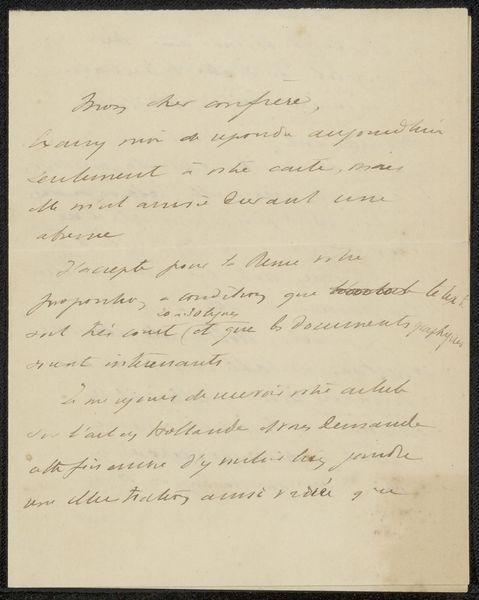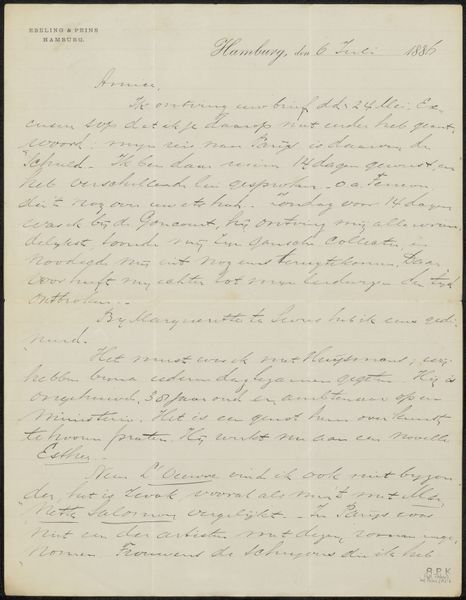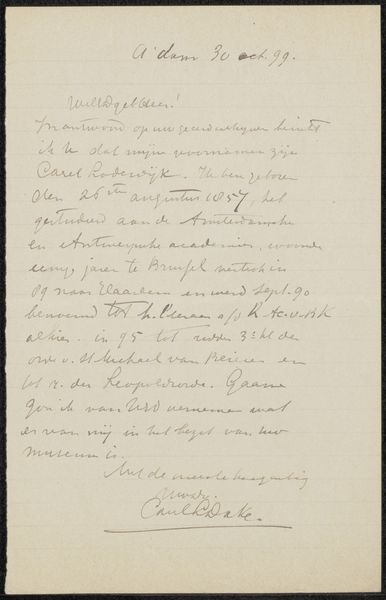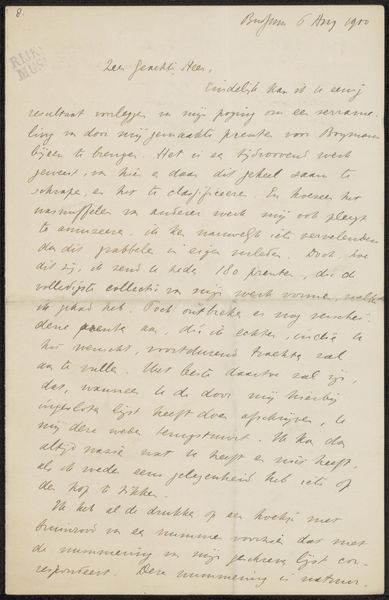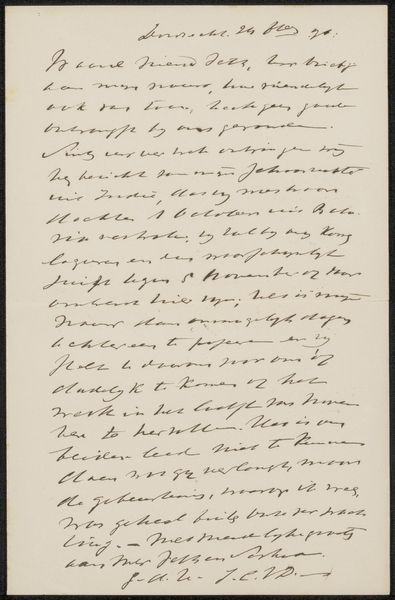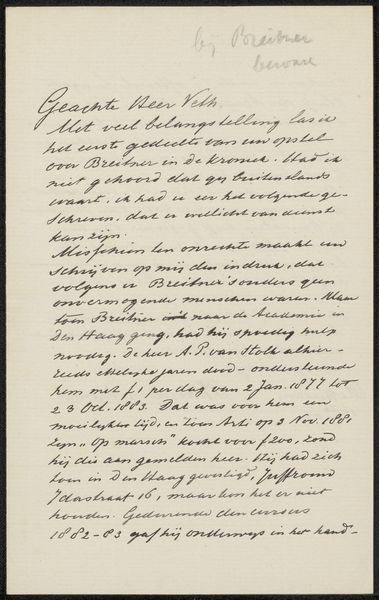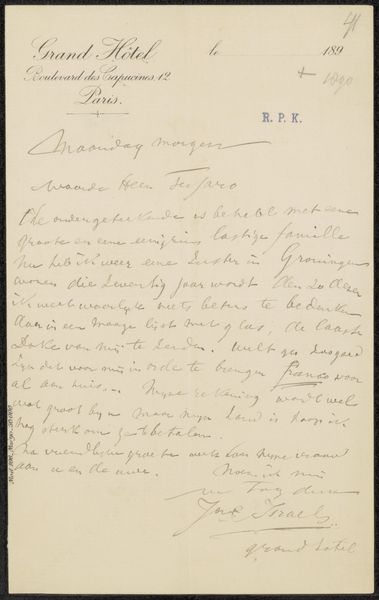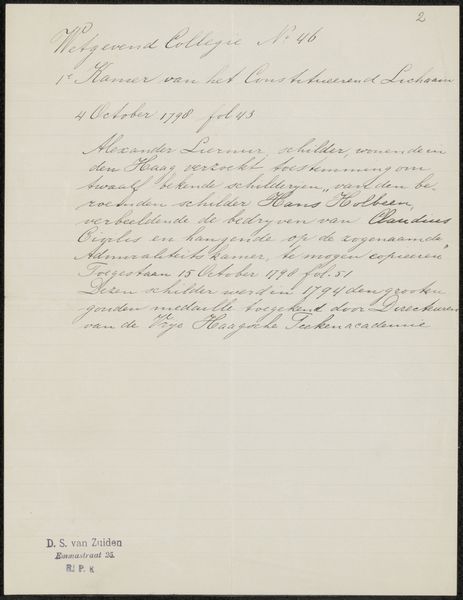
Copyright: Rijks Museum: Open Domain
Curator: Approaching this display at the Rijksmuseum, we find "Brief aan Philip Zilcken," a pen and ink letter from the hand of Roger Marx, dating between 1869 and 1913. It strikes me as more intimate artifact than artwork, really. Editor: Yes, a fleeting impression. The cramped script suggests the constraints on Marx, speaking—perhaps hurriedly—to Zilcken. A personal history of intellectual exchange. It's tempting to speculate what was the tone of this urgent dialogue? Curator: The French script cascades down the aged paper. The pale brown color hints at the many years it's lived, cradled perhaps in a sketchbook. I'm immediately curious about the message. It gives a quiet window into a vibrant discourse. Editor: Marx's mentions of Spinoza, suggesting a lively cultural moment, point towards networks of artistic solidarity and resistance to dominant aesthetic or philosophical ideas of the time. Zilcken was connected with figures involved in social criticism, the letter itself embodies an art of engagement, a directness of message. Curator: Exactly! I imagine Roger Marx pausing with his pen, caught in a web of thought. There’s a certain energy. You sense an exchange between fellow artists who weren't afraid to critique established conventions. And that’s pretty exciting. Editor: In that way, it complicates romantic notions of the solitary artist. This object acts as a historical marker of creative collaboration and how that has influenced a whole society and it still matters, right? Letters have so much emotion. Curator: Beautifully put. It speaks to me about how much work remains hidden, exchanged in private and that we only now get to peek into across such a gap in time. Editor: These archival whispers urge us to revisit art history with contemporary questions, questioning its values beyond the aesthetics, like looking at how these networks played a part in social change.
Comments
No comments
Be the first to comment and join the conversation on the ultimate creative platform.
